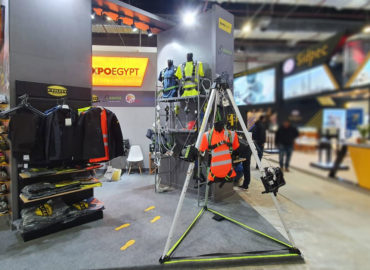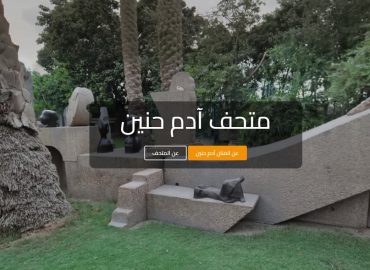Adam Museum’s New H-MMS Makes Collections More Accessible
The Adam Museum, a world-renowned institution dedicated to the history of human evolution, has recently implemented a new Museum Collection Management System (MCMS), named H-MMS. The new system, developed by Hawas Design, is designed to make the museum’s collections more accessible to researchers, students, and the general public.
Features of H-MMS
- Collection Management: H-MMS provides a centralized repository for all of the museum’s collection data, including object records, images, and documentation. This data is searchable and sortable, making it easy for users to find the information they need. The system also allows users to create and share custom reports, which can be used for research, education, or outreach.
- Website Management: H-MMS allows the museum to create and manage its own website. The system provides a drag-and-drop interface that makes it easy to add and edit content, and it also includes features for managing user accounts and permissions.
- Contest Management: H-MMS allows the museum to run contests and promotions. The system provides a variety of features for creating and managing contests, including the ability to set rules, deadlines, and prizes.
- Ticket Management: H-MMS allows the museum to sell tickets online. The system provides a variety of features for managing ticket sales, including the ability to set prices, create discounts, and track sales.
- Giftshop Management: H-MMS allows the museum to sell merchandise online. The system provides a variety of features for managing giftshop sales, including the ability to set prices, create discounts, and track sales.
Benefits of H-MMS
- Improved efficiency: H-MMS can help the museum to streamline its collection management processes, freeing up staff time to focus on other tasks.
- Increased accuracy: H-MMS can help the museum to keep accurate records of its collection, which can help to prevent loss or damage.
- Enhanced security: H-MMS can help the museum to protect its collection from theft, vandalism, and other threats.
- Improved access to information: H-MMS can make it easier for the museum to find and access information about its collection. This can be helpful for researchers, students, and the general public.
Aim of the project
The aim of the H-MMS project is to provide the Adam Henein Museum with a comprehensive and user-friendly system for managing its collections. The system will allow the museum to track the location, condition, and provenance of its objects, as well as create and share custom reports.
Procedures in collection management
The H-MMS system will allow the Adam Henein Museum to manage its collections in a number of ways, including:
- Tracking the location of objects: The system will allow the museum to track the location of its objects, both in storage and on display. This will help to ensure that the objects are always accounted for and that they are not lost or damaged.
- Monitoring the condition of objects: The system will allow the museum to monitor the condition of its objects over time. This will help the museum to identify any potential problems with the objects and to take steps to prevent damage.
- Creating and sharing custom reports: The system will allow the museum to create and share custom reports on its collections. This will allow the museum to share information about its collections with researchers, students, and the general public.
- Insurance: The system will allow the museum to track the insurance coverage for its collections. This will help the museum to ensure that its collections are properly insured in the event of loss or damage.
- Acquisitions: The system will allow the museum to track the acquisition of new objects for its collection. This will help the museum to ensure that all new objects are properly documented and accessioned.
- Deaccessions: The system will allow the museum to track the deaccession of objects from its collection. This will help the museum to ensure that all deaccessioned objects are properly documented and disposed of.
- Loans: The system will allow the museum to track loans of objects from its collection. This will help the museum to ensure that all loaned objects are properly documented and returned.
- Ethics: The system will allow the museum to track its compliance with ethical guidelines for the care and handling of cultural property. This will help the museum to ensure that its collections are treated with respect and care.
These are just a few of the procedures that are supported by the H-MMS system. The system is designed to be flexible and scalable, so it can be adapted to meet the specific needs of any museum.
Technologies used in the project
The H-MMS system is built on a number of technologies, including:
- A relational database: The system uses a relational database to store information about the museum’s collections. This database is designed to be scalable and reliable.
- A web-based interface: The system has a user-friendly web-based interface that makes it easy to use. The interface is designed to be accessible to users with a variety of technical skills.
- A mobile app: The system also has a mobile app that allows users to access the system from their mobile devices. The app is designed to be easy to use and to provide users with the information they need on the go.
Conclusion
H-MMS is a valuable tool for the Adam Henein Museum. The system can help the museum to improve its collection management processes, and it can make it easier for the museum to share information about its collection with the public. If you are interested in learning more about H-MMS, please visit our website or contact us today.
All of the sections of H-MMS are synced with each other, which means that changes made in one section are automatically reflected in the others. This makes it easy for museum staff to manage the museum’s collections, website, contests, tickets, and giftshop from a single system.
The Adam Museum’s new H-MMS is a valuable tool that will help the museum to better serve its users. The system makes the museum’s collections more accessible and helps to improve the museum’s collection management processes. This is a significant step forward for the Adam Museum and will help the museum to continue to be a leading institution in the field of human evolution.




